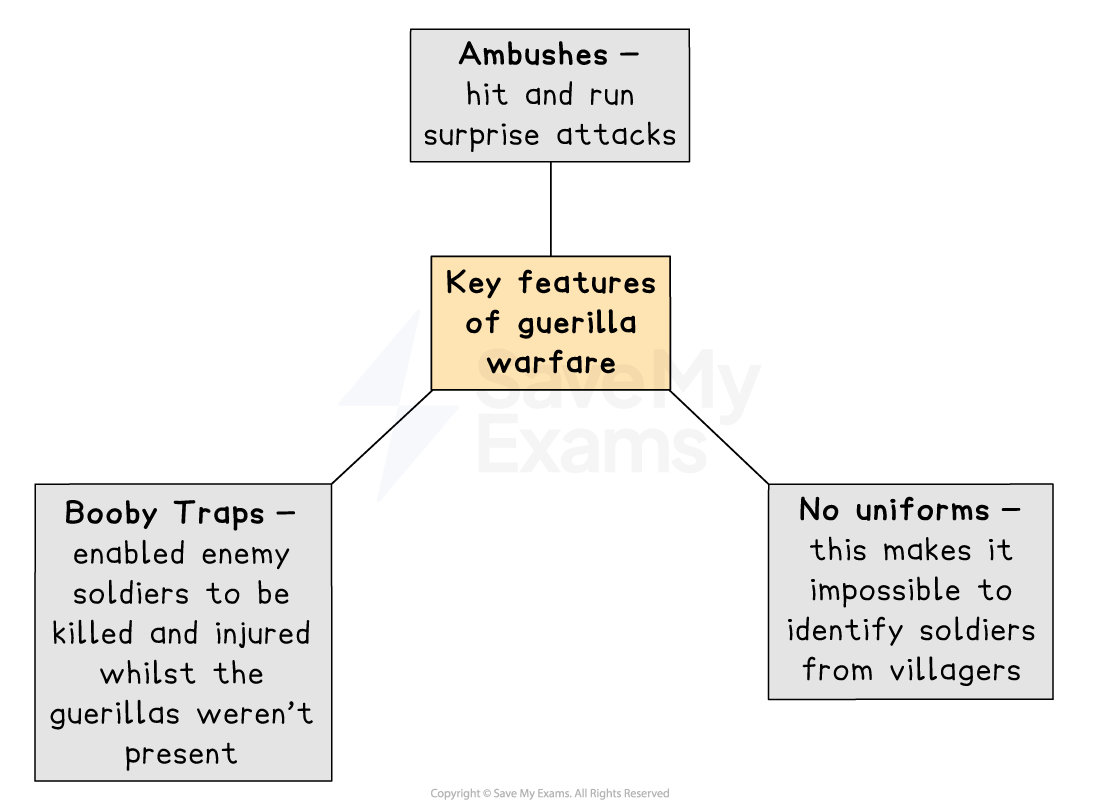Vietcong Guerilla Warfare Tactics (Edexcel GCSE History): Revision Note
Exam code: 1HI0
Summary
The United States had the most well-equipped and technologically advanced armed forces in the world. Vietnam was a tiny impoverished nation. A quick American victory in the war was widely predicted. However, the Americans struggled to find the enemy and yet their soldiers suffered a steady stream of deaths and injuries. This is because the Vietcong were experts in guerilla warfare.
What is guerilla warfare?
Guerilla warfare is sometimes called unconventional or asymmetric warfare
It is an approach often used by people facing an invading force that is much stronger, wealthier and better equipped
In conventional wars, such as the Napoleonic Wars and World War I, large armies of soldiers in uniforms fight fixed battles
The winners of those large battles would usually win the war
Guerilla warfare is very different and involves avoiding large battles at all costs
Instead, guerilla fighters stay hidden and try to inflict damage on their enemy through thousands of tiny attacks

How did the Vietcong use guerilla warfare?
The Vietcong were extremely effective guerilla fighters for several reasons:
They had experienced leaders like Ho Chi Minh who had fought guerilla campaigns against Japan and France
The jungle was the perfect environment as it was easy to hide fighters and set ambushes and booby traps
Approximately, 15% of US injuries and 11% of US deaths in the Vietnam War were caused by booby traps
They were well-equipped thanks to the Ho Chi Minh Trail
They brutally punished those who collaborated with the enemy
They were supportive of farmers and never stole their harvests or animals
They built an enormous network of tunnels to enable them to both hide and take shelter from the enormous aerial bombing campaign
AWAITING IMAGE
Examiner Tips and Tricks
When assessing how useful a source is, make sure you assess both the content of the source and its provenance (its origin). Assess each source’s nature (what it is), origin (where it came from) and purpose (the reason why it was created ) to give a comprehensive view of its utility.

Unlock more, it's free!
Did this page help you?